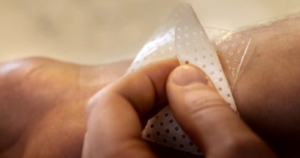
Antimicrobial resistance: Q&A with CARB-X about the fight against AMR
Combating Antibiotic-Resistant Bacteria Biopharmaceutical Accelerator (CARB-X) is an industry alliance to support research and development projects in AMR. Since its inception in 2016, CARB-X has supported 114 R&D projects across 14 countries, leading to 18 projects advancing into or completing clinical trials. EBM talked to CARB-X Executive Director Kevin Outterson.
In issue 1-25 of European Biotechnology News Magazine, we featured the ‘pandemic crossroads’ of pandemic (viral) infections and the silent pandemy of antimicrobial resistance which raises from animal farming and may help crossing the barrier of species for viruses. In this situation, in tandem with more academic research groups, industry has accepted the AMR challenge. There is the AMR Action Fund, Combating Antibiotic-Resistant Bacteria Biopharmaceutical Accelerator (CARB-X), as well as the AMR Accelerator, which is part of the Innovative Medicines Initiative. Since its inception in 2016, CARB-X has supported 114 R&D projects across 14 countries, leading to 18 projects advancing into or completing clinical trials. 12 of those remain in active clinical development – including late-stage trials. Two CARB-X-supported diagnostic products have already reached the market, and at least nine product developers have secured advanced development partnerships to continue clinical progress after leaving the CARB-X portfolio. EBM talked to CARB-X Executive Director Kevin Outterson:
EBM: The overall situation in respect to awareness of the antibiotics crisis: has much changed or is there still a lack of support and awareness?
Executive Director Kevin Outterson: Awareness of the antibiotic pipeline and access crisis has increased in recent years, gaining traction on the global stage. The United Nations High-Level Meeting on AMR in September 2024 underscored its urgency, with the issue also being a key focus in recurrent G7 and G20 discussions.
Governments are increasingly supporting antibiotic R&D via public-private partnerships like CARB-X. The implementation of fully-fledged or pilot reimbursement changes from the United Kingdom, Italy, Japan and Canada also represents a critical step toward creating sustainable market conditions for much-needed antibacterial products.
While this progress is promising, greater awareness is still needed—both at the community level and among global leaders—to ensure a stronger response to the growing antibiotics crisis. We must continue to push for sustainable funding, better stewardship, and equitable access to new and existing antibiotics. The momentum is in the right direction, but more aligned action is needed to fully address this urgent public health threat.
EBM: There are quite a few European initiatives ongoing or also globally with CARBX, the WHO and others. Is this “good” or are all these initiatives not coordinated enough to make the most out of a synergized approach to tackle AMR/the next pandemic?
K.O.: The growing number of initiatives focused on the antibiotic pipeline and access crisis—whether in Europe or globally with organizations like CARB-X—is an encouraging sign that the world is taking this threat seriously. The increased energy and investment in antibiotic R&D, stewardship, and access strategies are critical steps toward addressing this crisis.
Our coordination with European initiatives is strong. For example, we work closely with the IMI COMBINE project and other partners (including CAIRD, iiCON and Pharmacology Discovery Services) to develop and validate a standardised in vivo pneumonia model to test small molecule antibiotics. Another example is the complementary support received from SNIPR Biome, a Danish biotech company, both from CARB-X and from HERA Invest. The antibiotic crisis affects all of us, and a more synergized, global approach will ensure that resources are used effectively and that innovative solutions reach patients faster. The momentum is there, but we need to maximize collaboration to drive real impact.
EBM: Of course we know that there are differences in AMR as silent pandemic or a real pandemic like the next bird flu might become. But would you also see some common issues for the developers of drugs in both areas, AMR and pandemic infectious diseases?
K.O.: While the antibiotic crisis is often referred to as a “silent pandemic” and differs from the rapid onset of viral pandemics like bird flu, there are fundamental commonalities in how we must prepare for and respond to both threats. At their core, both AMR and pandemic infectious diseases challenge our ability to protect human health and require robust innovation across preventatives, diagnostics, and treatments to reduce their impact.
Preventatives, such as vaccines, are one of our strongest tools against infectious diseases, including bacterial infections that contribute to AMR. Vaccination can reduce the incidence of bacterial infections, ultimately lowering the need for antibiotic use and slowing the spread of resistance. Expanding access to vaccines and developing new ones targeting resistant pathogens will be critical to mitigating the AMR crisis and future pandemics alike.
Rapid and accurate diagnostics are another key area of overlap. Whether in the context of a viral pandemic or a drug-resistant bacterial infection, the ability to quickly identify the causative pathogen is essential for guiding appropriate treatment. In AMR, better diagnostics can help reduce unnecessary antibiotic use, ensuring that patients receive the right drug at the right time. In a pandemic, rapid diagnostics can help contain outbreaks by enabling swift public health responses. Investing in next-generation diagnostic technologies will benefit both fields.
Finally, effective treatments remain the last line of defense. In both AMR and pandemic preparedness, developing new therapeutics is critical to saving lives. The challenge is that antimicrobial and antiviral drug development has long been economically fragile, with market failures discouraging investment. Addressing these issues requires sustained support for R&D, innovative incentives, and global cooperation to ensure that life-saving treatments are developed, available, and used responsibly.
Ultimately, AMR and pandemic infectious diseases share a fundamental need for stronger global preparedness. By advancing vaccines, diagnostics, and treatments in a coordinated way, we can build more resilient health systems capable of protecting people from both slow-burning and rapidly emerging health threats.
EBM: We have just seen the IPO of Bioversys at SIX in switzerland, Europe: is this IPO something like a spotlight for the whole topic of AMR?
K.O.: We welcome the successful IPO of BioVersys. Raising CHF 80 million ($88 million) for antibacterial R&D is not an easy task under current market circumstances, and we congratulate Marc Gitzinger and his team for this accomplishment. BioVersys is a great example of a promising company which has benefitted from funding and support by public-private partnerships such as CARB-X and the Innovative Medicines Initiative.
The reality for many antibacterial product developers, though, remains that attracting sustained investment is very difficult given the market failure for the commercialization of innovative antibiotics. While the news from Switzerland represents an encouraging step, continued efforts are needed to create sustainable economic models—such as pull incentives and novel funding mechanisms—to ensure that innovation in antibiotic development remains viable in the long term. The BioVersys IPO is a spotlight moment, but lasting impact will depend on maintaining and expanding this momentum.
EBM: How do you see the whole arena of developments in AMR, who else is in good progress of a drug development, in which special AMR hot topics do you see positive progress?
K.O.: The landscape of antibiotic development has evolved significantly in recent years, with growing momentum in the fight against drug-resistant bacteria. When CARB-X was founded in 2016, the early-stage antibiotic pipeline was stalled, but today, we are seeing movement toward meaningful progress. Since its inception, CARB-X has supported 114 R&D projects across 14 countries, leading to 18 projects advancing into or completing clinical trials, 12 of which remain in active clinical development—including late-stage trials. Two CARB-X-supported diagnostic products have already reached the market, and at least nine product developers have secured advanced development partnerships to continue their clinical progress after leaving the CARB-X portfolio.
One of the most encouraging trends is the increasing focus on ensuring that new antibiotics are not only developed but also used responsibly and made accessible to those who need them most. All CARB-X-funded product developers are required to establish Stewardship and Access Plans, reflecting a growing recognition that research and development must go hand in hand with sustainable access and responsible use, particularly in low- and middle-income countries.
While significant challenges remain, the renewed energy, scientific progress, and growing support for innovative financing mechanisms give us reason for cautious optimism in the fight against the antibiotic crisis.
EBM: How is Europe doing in AMR in general in your perspective from the US/Boston, or are other global regions more advanced?
K.O.: Europe has been a strong player in the fight against the antibiotic crisis, with world-class science and a deep commitment to addressing antimicrobial resistance. Since CARB-X’s inception, we have supported more than 30 projects from European biotech companies.
That said, no single region has all the answers, and global coordination is essential. There is also groundbreaking science coming from the US and other countries. The challenge ahead is ensuring that all these initiatives are aligned to drive meaningful, long-term impact. The antibiotic pipeline and access crisis is a global threat that requires all hands on deck, and it is encouraging to see Europe playing such a strong role in advancing solutions.
EBM: Thank you.


 EIB
EIB Image by freepik
Image by freepik Amiferia AB
Amiferia AB